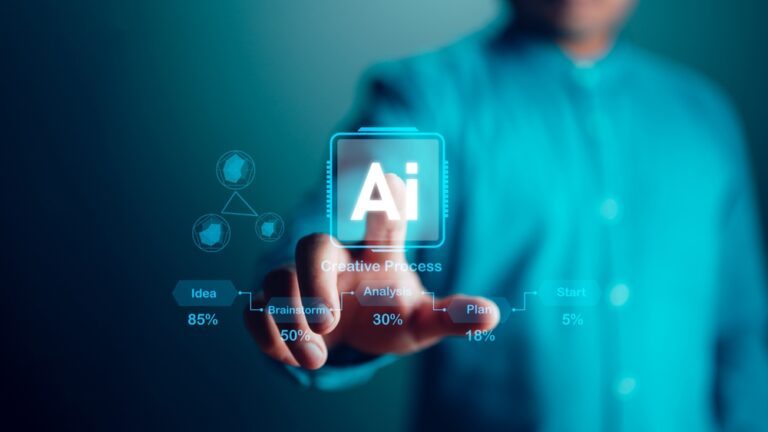7 Digital Marketing Channels You Need to Prioritize in 2023
The future is based on digital transformation, and companies that aren’t focused on it will be left behind. 85% of enterprise decision-makers say they have a timeframe of two years to make significant traction in this area before falling behind.
Digital transformation is occurring across all facets of the business world – from what’s happening inside their walls to the way they interact with the outside world. Promotion is at the forefront of this evolution, with digital marketing channels becoming critical in the competition for market share.
Keep reading to learn more about the digital marketing channels you need to watch in 2021, and what they can mean for your business.
Digital Marketing Channels Defined
Digital marketing is an overarching term that encompasses any type of online marketing. In today’s omnichannel landscape, that can range from video marketing and blog posts to PPC to display advertising and so much more. The different types of digital marketing channels are:
- SEM (Search Engine Marketing)
- SEO (Search Engine Optimization)
- PPC (Pay Per Click)
- Social Media Marketing
- Content Marketing
- Email Marketing
- Influencer or Affiliate Marketing
- Viral Marketing
- Mobile Device and Mobile App Strategies
These elements work in conjunction with more traditional methods like TV, radio, and print. In today’s crowded business atmosphere, savvy companies not only use digital marketing methods but thoughtfully combine them with other advertising and promotional platforms.
It’s likely you’re hearing the term “digital marketing channels” more than ever, and for good reason: modern companies simply cannot compete without leveraging these platforms to generate brand awareness, customer loyalty, and new leads.
Benefits of Digital Marketing
In addition to simply being table stakes for modern companies, leveraging digital marketing channels can offer several benefits.
Constant online presence
The fact is, everyone is online these days. About 4.66 billion people were online in 2020, or approximately 59% of the global population. If you want to get in front of your customers, you need to be there too.
People expect to be able to reach the businesses they patronize online, either by visiting a website for information, asking a question on Twitter, or visiting social media to see if there are any offers. It’s crucial to be online as much as possible so that you can remain top of mind and also be accessible.
Cost-effective

According to the company Social Vantage, traditional media channels such as billboard, direct mail, or print range from $5-57 CPM (cost per thousand impressions). On the other hand, advertising on social media platforms averages a cost of around $2.50 per 1000 viewers. It’s difficult to find such targeted, personalized advertising opportunities at the low cost that digital marketing channels present.
Provides instant and highly effective results
When someone opens an email, they can go to your website immediately and possibly even purchase a product. If someone sees an ad, they can instantly follow links, go to the video being shown, or fill out a form. There are very few instances in traditional media forms for people to take an action immediately after viewing an ad.
Also, digital advertising is designed to speak to people at a time when they are primed to receive the message, meaning that when they do take an action, it’s one that’s more likely to ultimately lead to a conversion.
Delivers an excellent return on investment
Generally speaking, digital marketing channels offer a great return for a lower investment, which leads to a strong ROI. For example, some research shows that ROI on email programs yields an ROI of 122%. Similar research shows that blogging can increase a company’s chances of positive ROI by 13-fold, and companies generate an average of $2 for every $1 they spend on Google advertising.
You can be sure that if you take a thoughtful approach to digital marketing channels, you will not only get back the money you put in but more.
Encourages a direct communication route between companies and their customers
A 2017 study predicted that over the next several years, 25% of customer service operations will use virtual customer assistants like chatbots. That’s because people just like doing things virtually, and as our world gets more digital, their preferences lean toward person-to-person interaction and doing what they can online.
Consumers expect to be able to reach your company instantly and get a response immediately. Many brands have found success by using social media, such as Twitter, as part of their customer service. At a basic level, companies can have a good pulse on what is being said about them by practicing “social listening”.
Reaches potential customers during various stages of the buyer’s journey
The buyer’s journey has become a critical component of marketing strategy. Broken into three stages (Awareness, Consideration, and Decision), the journey reflects the different phases people go through when making decisions about which company to choose.
One powerful function of digital marketing channels is that they can use the data they’ve collected to serve content relevant to the buyer’s journey.
Allows interacting with an audience in real-time
It is very little that’s more powerful than getting your message in front of a potential customer at the exact moment when they are mulling over purchasing decisions. Many people find retargeting ads controversial. For example, the ads you might see scrolling through Facebook, that mention a product you were just viewing online.
The fact is, this form of marketing is the future. The availability of data makes it possible to gain real insights into audiences and what they want. Then, businesses can use these insights to serve ads at a time that is more likely to result in a desired activity.
Highly customizable
The heart of marketing is really getting the right message to the right people at the right time, and digital marketing channels help you to do that. The recipient feels a connection with the advertiser that is hard to match when customization and personalization are done right. Each digital channel offers its own powerful customization options.
You might narrow audiences based on a variety of factors, or retarget those who’ve already shown an interest in your company. You are also likely to have access to personal contact and past purchase and viewing information on digital channels. All of this data should lead to experiences that feel much more personal and engaging.
Precise targeting

It’s easier than ever to segment your audience so that you can better market to them. Online tools can keep track of demographic information that is valuable in outreach. Not only that, many digital marketing channels have their own targeting mechanisms that allow hyper-targeted campaigns. For example, on LinkedIn advertisers can target by job title, interests, geographic location, or group memberships.
Has a global reach
The internet is not limited by physical space or geography. Advertisers can reach potential customers anywhere on the planet. Furthermore, digital marketing channels level the playing field between Fortune 100 companies and sole proprietorships.
As long as you have the bandwidth to focus on things like your website optimization and social media, you can have a strong presence online.
Easier to measure
Most of the digital marketing channels have platforms that want you to measure performance. All of the social media, video, PPC, and SEO platforms have intuitive tools that help you pull numbers and see what’s working.
Media buyers for radio or TV might have an idea of impressions, but they can’t measure the engagement of your ads. With digital channels, you can really see how many people clicked, and when, and sometimes even learn more about them to inform other efforts.
You’ll know exactly what you spent, what’s left of your budget, and in most cases, your ROI. You can test various elements and see what’s working and what’s not, and optimize. Digital marketing channels provide all manner of reporting that provide true insights to help build better programs.
Digital Marketing Channels to Focus On
Have we convinced you of the importance of digital marketing channels? It’s easy to understand the benefits. So why isn’t every company all-in on digital? Well, for one thing, it’s such a broad and complex area that it takes an expert to develop an effective strategy. However, that doesn’t mean you shouldn’t explore the different channels and create some programs for each.
Though by no means a comprehensive list, these are the main digital marketing channels to focus on in 2021.
Email Marketing
Email is still one of the more important digital marketing channels around. In fact, email can deliver what is considered medium to high ROI. Even though email isn’t the newest technology available, it supports many other forms of marketing. Marketing automation can help create highly effective programs based on new innovations.
Additionally, knowing the latest trends (such as incorporating video) allows you to apply them to your email campaigns or newsletters. Email can help B2B marketers to generate leads, and can lead to online sales for e-commerce companies. Beyond those results, email marketers can create brand awareness and nurture relationships. In 2021, continue to focus on your subject lines.
We suggest crafting time-sensitive ones that mention a date or event specifically. Additionally, customers expect personalization across all facets of their experience. That means advertisers should segment emails and use data to personalize as much as possible.
Social Media
Some digital innovations evolve into something bigger than they were ever intended to be. Social media is one such digital marketing channel. This channel is one that people use to make personal connections, but business is responsible for an increasing share.
You can use social media to invest in relationships and cultivate a brand presence. Additionally, social platforms provide a path to new clients for many organizations. We suggest B2B companies leverage social media like LinkedIn, Twitter, or Facebook—which account for driving 80%, 13%, and 7% of qualified B2B leads, respectively. Social media is a platform for executing other digital strategies.
For example, it’s a place to promote content that you develop such as videos and thought leadership. Paid advertising on social also offers the ability to deliver highly targeted and relevant content that leads to conversions.
Social Media Trends
Some trends to keep an eye on in the coming year are:
- An increase in influencer and user-generated content – Instagram Live activity was up 70% last year. That reflects a need on consumers’ behalf to connect in a real way. Seeing how average users as well as influencers interact with brands will be increasingly important for social media followers.
- The practice of “social listening” will drive message development – Social listening is the practice of following online conversations to determine people’s attitudes toward your brand. Additionally, it’s important to “listen” to conversations trending to see what is currently relevant and if your organization can contribute to the conversation at all.
- Watch for an uptick in Instagram marketing – While Instagram previously served as a venue to see photos of friends and funny memes, it now offers a place for brands to reach potential customers. Expect to see more efforts on the part of businesses to capture attention and market share. If you’re not already familiar with Instagram’s advertising options, it’s a good time to learn.
Search Engine Marketing
SEO – or the practice of optimizing your web content to rank in search queries on engines like Google or Bing- has always been important for digital marketing.
At a basic level, SEO involves researching keywords and searcher intent so that you can create relevant content for organic search results. It’s a complex and ever-evolving science, and most departments either have their own expert or outsource this expertise. Here are the top SEO trends to watch for in 2021, according to SEO thought leader Search Engine Journal:
- Focus on search intent – Traditionally, keyword research has been the most important aspect of SEO visibility. Now, they still matter, but more as a reflection of how searchers actually make queries on search engines. Artificial Intelligence is helping Google and other search engines to better understand what question people are trying to obtain answers to when they search.
- Leverage behavioral data – Keyword volume will take a back seat and SEO will be more about behavioral analytics. Perform more research on customer behavior so that you can create content that helps with long-term value and customer loyalty. Use buyer personas to develop relevant and timely landing pages.
- Core web vitals – These will be a ranking factor in 2021, according to Google. Websites can no longer ignore page metrics like load time. Image rendering, mobile friendliness, and general user experience all matter in search ranking, much more than before.
Mobile Marketing

Mobile phone usage increases every single day. It’s important to develop and serve content that is targeted to mobile users. Furthermore, geo-targeting capabilities on mobile phones use location information to recommend products or services more conveniently.
Smartphone users spend a lot of their time on apps and games, which can make a profitable marketing channel – as well as collect customer data. Use mobile trends to help you increase sales by creating mobile-friendly shopping experiences. Modern consumers also prefer businesses that can deliver valuable information right to their devices. You can use a mobile strategy to create demand for products and services.
Focus on quick-loading pages, compressed images, top-to-bottom scrolling, large buttons, and font sizes, because mobile load time is crucial. It’s also worth exploring mobile technologies like QR codes which customers can scan to visit your website or take other actions.
Display Advertising
This form of advertising allows users to leverage images, audio, and video to communicate their advertising message better. Advertisers use this media on websites, email platforms, social media, and several other digital channels that offer ad placements, usually in the form of a banner.
Rather than relying on keywords, display ads success depends on how well you can match your ad to the host website’s audience to drive conversions.
Video Advertising
Internet users everywhere enjoy video content – in fact, 85% of internet users in the US watch video content monthly. Some trends to watch out for include increased user-generated content, and additional usage on social platforms like Facebook and Instagram.
Also, look out for increased live streaming activity and real-time webinars. Don’t forget to integrate the material you leverage on your digital signage, particularly user-generated video.
Integrated Digital Signage
Digital signage continues to grow in importance, but having a smart strategy around it is what can set an organization apart. While you consider content for other digital marketing channels, don’t forget to factor in digital signage opportunities.
Digital signage can provide a great foundation for internal communication. But can also offer more user-generated content on social media and feedback sites. Additionally, you can use digital signage to drive traffic to your website or other channels. Integrate digital screens with your other marketing channels by using existing videos, images, client testimonials, etc.
If you use digital signage to generate traffic, interest, or upsell opportunities, choose content that will resonate with the audience present. Also, be sure to segment content times based on who will be passing by and when. You can leverage data pulled from your other digital marketing channels to inform these strategies.
To learn more about putting together an impactful digital signage strategy, check out our comprehensive guide.
Considerations in Determining the Right Digital Marketing Channels for your Business
Digital marketing channels are far from a one-size-fits-all approach. Exactly which ones will work for you depend on a variety of factors. Ask yourself the following questions:
- What is your brand? – Some industries are a more natural fit for promoting online. What is the nature of your business, and does your brand voice lend itself to digital marketing?
- What is your budget? – There are a lot of things you can do for free or very little in the digital realm. Which channels do you want to use? As well as how much, will be heavily dependent on what you are willing and able to spend.
- What are your marketing goals? – Do you want to generate leads, make customers more loyal, be viewed as more of a thought leader, or increase sales per order? Each channel has its own unique benefits and you need to use the ones that are best suited to meet your objectives.
- Who is your audience? – Who are your customers and what is the best way to reach them?
- Is your audience online? – Good marketing requires meeting your audience where they are. If you have done your research and see that your target audience doesn’t spend time online, it might not make sense to invest there. On the other hand, proper research can show you which digital marketing channels will be the most profitable.
- What resources do you have? – If you don’t have any staff available to manage the components of a digital program, it might not be worth your time. Successful digital marketing channels tend to leverage a lot of content and require leveraging analytics and reporting. If you don’t have the bandwidth to take this on, you likely will not see the strong ROI we mentioned earlier.
Conclusion
Business owners are increasingly focused on more modern marketing methods. For example, savvy leaders are implementing digital signage at a rapid pace, with 60% of enterprises without digital signage in their stores planning to invest in the technology within the next two years. For more insights on internal and external communications, follow our blog or reach out to one of our experienced solutions consultants.




